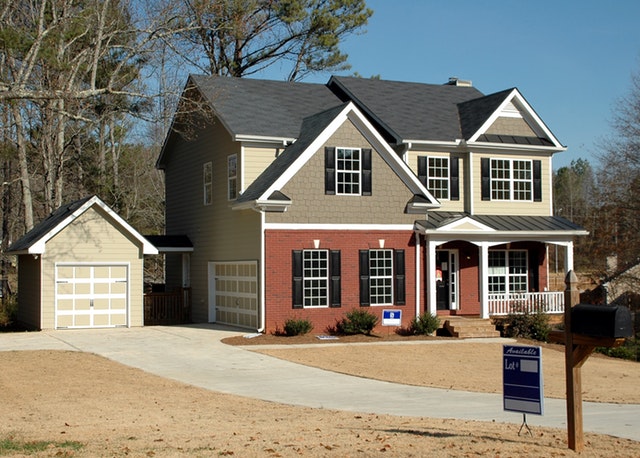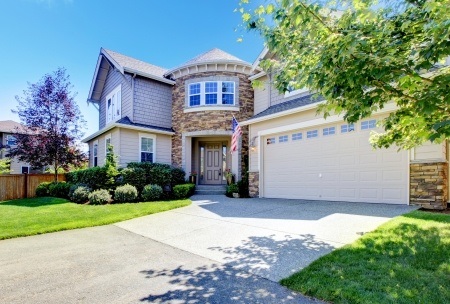 Last week’s economic news included readings from Case-Shiller Home Price Indices, along with Commerce Department readings on public and private-sector job growth and the University of Michigan’s Consumer Sentiment Index. Weekly reports on jobless claims and mortgage rates were also released.
Last week’s economic news included readings from Case-Shiller Home Price Indices, along with Commerce Department readings on public and private-sector job growth and the University of Michigan’s Consumer Sentiment Index. Weekly reports on jobless claims and mortgage rates were also released.
Case-Shiller: Home Price Growth Ramps Up as Demand for Homes Increases
July home prices rose at a year-over-year rate of 4.80 percent in July as compared to June’s reading of 4.40 percent. Shortages of available homes were driven by demand. Homebuyers were looking for larger homes to accommodate working from home and also wanted to leave congested urban areas.
Home prices in Case-Shiller’s 20-City Index rose by 3.90 percent year-over-year in July; Home prices in participating cities grew by 3.50 percent in June. Home prices grew fastest in Phoenix, Arizona with a year-over-year growth rate of 9.20 percent. Seattle, Washington home prices grew by 7.00 percent, and home prices in Charlotte, North Carolina rose by 6.00 percent.
Craig Lazzara, managing director and global head of index investment strategy at S&P Dow Jones Indices, said,
“Prices were particularly strong in the Southwest and West were comparatively weak in the Midwest and Northeast.” 16 of 19 cities in the 20-City Home Price Index reported a faster growth rate for July’s home prices. Detroit, Michigan did not report data for July’s 20-City Home Price Index.
Construction spending in August jumped from July’s reading of 0.70 percent growth to 1.40 percent. This could be positive news if it indicates a faster pace of home construction, but it could also reflect higher prices for building materials. Rising costs of building materials are typically added to home prices, which further challenges first-time and moderate-income home buyers.
Mortgage Rates and Jobless Claims Fall
Freddie Mac reported lower fixed mortgage rates last week; The average rate for a 30-year fixed-rate mortgage dropped two basis points to 2.88 percent; rates for 15-year fixed-rate mortgages averaged four basis points lower at 2.36 percent. The average rate for 5/1 adjustable rate mortgages was unchanged at 2.90 percent. Discount points averaged 0.80 percent for 30-year fixed-rate mortgages and 0.70 percent for 15-year fixed-rate mortgages. Discount points for 5/1 adjustable rate mortgages 0.20 percent.
New jobless claims fell to 837,000 claims filed from the prior week’s reading of 873,000 initial claims filed. Ongoing claims were also lower last week with 11.77 million filings as compared to 12.75 million ongoing claims filed in the previous week.
The national unemployment rate dipped below 8.00 percent for the first time since March with a reading of 7.90 percent. Analysts said that the number of people in the workforce dropped from 164.5 million in February to 160.1 million workers in September; this indicates that 4.4 million workers have left the workforce.
Consumer sentiment rose to its highest level since March according to the University of Michigan’s Consumer Sentiment Index reading for September was 80.40 as compared to August’s index reading of 74.10.
What’s Ahead
This week’s scheduled economic news includes readings on job openings and the minutes from the Fed’s Federal Open Market Committee meeting. Readings on public and private-sector jobs will also be reported.
 Home prices rose by 0.40 percent in October according to Case-Shiller’s 20-City Home Price Index and were unchanged from September’s year-over-year reading of 5.50 percent growth.
Home prices rose by 0.40 percent in October according to Case-Shiller’s 20-City Home Price Index and were unchanged from September’s year-over-year reading of 5.50 percent growth. Case-Shiller’s 20-city home price index for September reported the lowest pace of year-over-year home price growth in almost two years. Lower home prices balanced housing markets between sellers and buyers, but home prices continued to grow approximately two times faster than wage growth.
Case-Shiller’s 20-city home price index for September reported the lowest pace of year-over-year home price growth in almost two years. Lower home prices balanced housing markets between sellers and buyers, but home prices continued to grow approximately two times faster than wage growth. Home price growth slowed to its lowest pace in nearly a year according to the Case-Shiller Home Price Indices. National home price growth averaged 6.00 percent year-over-year as compared to 6.20 percent growth in June.
Home price growth slowed to its lowest pace in nearly a year according to the Case-Shiller Home Price Indices. National home price growth averaged 6.00 percent year-over-year as compared to 6.20 percent growth in June. Last week’s economic releases included readings on new home sales, pending home sales and Case-Shiller Home Price Indices. Construction spending and consumer sentiment reports were also released, along with weekly readings on average mortgage rates and new jobless claims.
Last week’s economic releases included readings on new home sales, pending home sales and Case-Shiller Home Price Indices. Construction spending and consumer sentiment reports were also released, along with weekly readings on average mortgage rates and new jobless claims. Home prices increased in November, with national home prices up 0.70 percent month-to-month and 6.20 percent higher year-over year. Case-Shiller’s 20-City Home Price Index rose by 0.70 percent in the three-month period ending in November; nationally, home prices grew 6.20 percent year-over-year.
Home prices increased in November, with national home prices up 0.70 percent month-to-month and 6.20 percent higher year-over year. Case-Shiller’s 20-City Home Price Index rose by 0.70 percent in the three-month period ending in November; nationally, home prices grew 6.20 percent year-over-year.